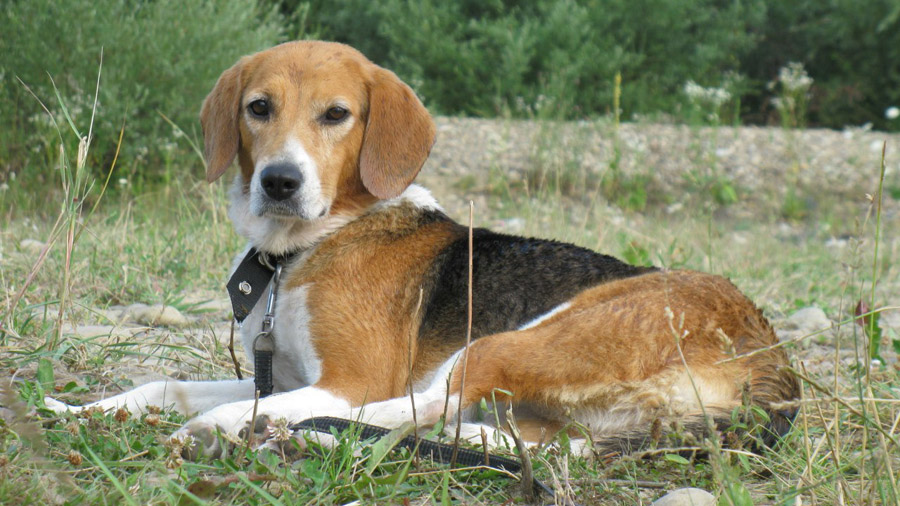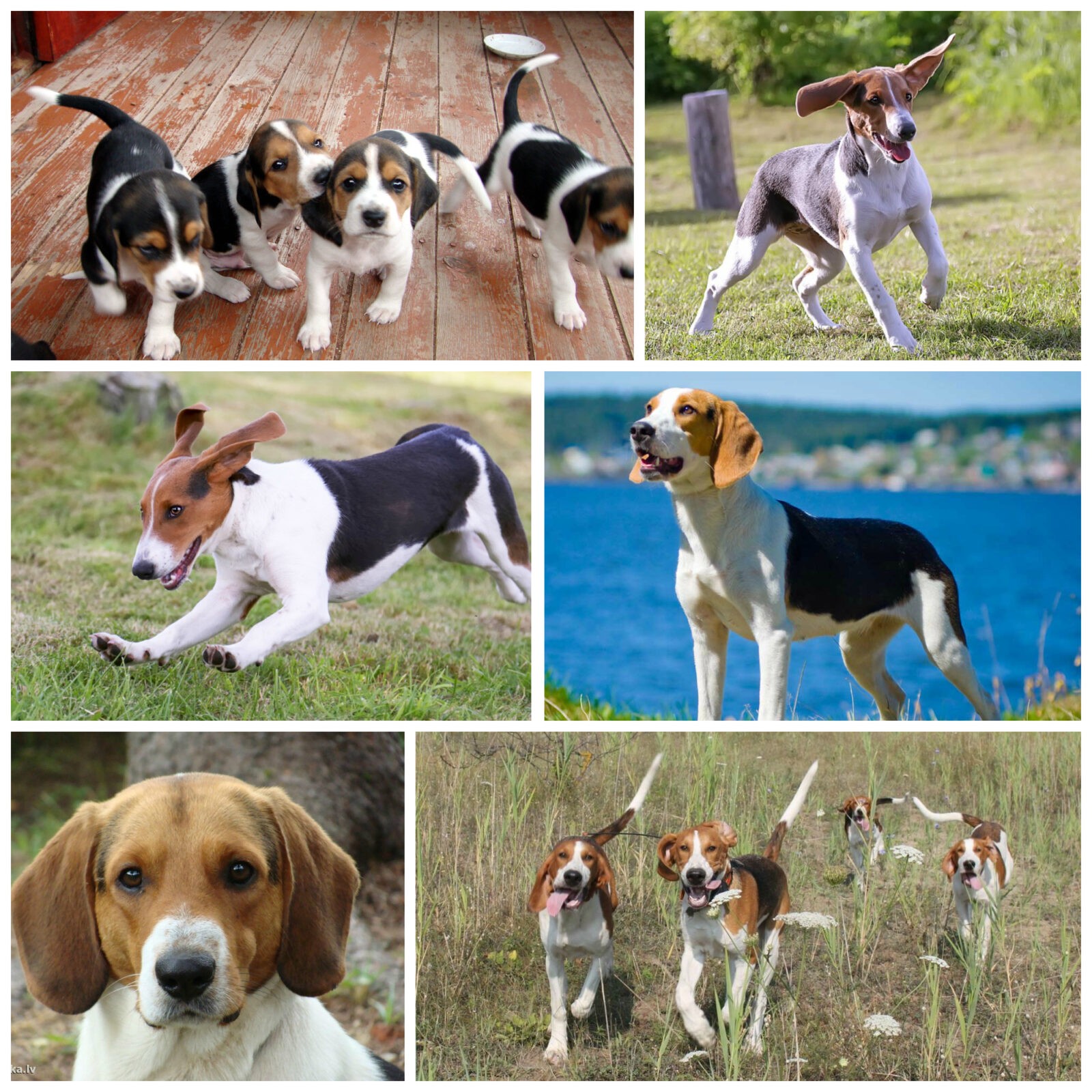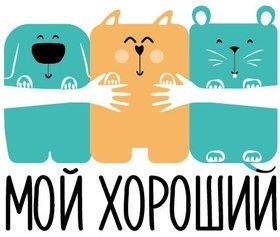
Brief description of the breed Estonian Hound
The melodiousness and power of the voice of the Estonian hound is sometimes disputed by hunters. Although in terms of musicality of barking, she loses to some hound breeds (the same Russian hound), the Estonian hound always readily, distinctively and loudly announces the owner about the location of the game. Most often, hounds from the Baltic states are attracted to the prey of ducks, hares, foxes (sometimes artiodactyls). From six months, these small, but strong and quick-witted dogs are able to show their first results during the capture of the beast. But Estonian hounds are loved not only in hunting circles - they are also able to play the role of beautiful and very obedient pets. Estonians are quite friendly to people, have a good character and devotion. And their dimensions (height up to 52 cm, weight up to 25 kg) and unpretentious care allow the owner to keep the dog even in a small living space. Although the owner-hunters are in favor of living hounds closer to nature.
Estonian hounds - strong, dry warehouse dogs. The shape of their head is rounded, the superciliary arches are noticeably pronounced. The transition from the forehead to the long muzzle is smooth. The ears of the Estonian hounds are low set, of medium thickness, hanging. The eyes are dark brown, almond shaped. Scissor bite. The neck is muscular, dry, there is no dewlap (in general, skin folds are not typical for Estonian hounds). The body is straight, with well-developed muscles, in the area of the croup there is a slight slope. The limbs are bony, very strong. The tail is not shorter than the hock, wide in diameter at the base, narrow towards the end. The colors of the Estonian hounds are black and piebald, brown and piebald and black and piebald in blush. The coat of Estonians is short, hard, and the undercoat is weakly expressed.
basic information
| Breed name: | Estonian Hound |
| Country of origin: | Estonia |
| The time of the birth of the breed: | 20th century |
| Type of: | not recognized |
| The weight: | 10 - 25 kg |
| Height (height at the withers): | 45 - 52 cm |
| Life Expectancy: | 10 – 12 years old |
|
ICF classification:
|
not recognized |
| Puppies price: | 100 – 400 $ |
| Most popular nicknames: | List of nicknames for the Estonian Hound |
Evaluation of the characteristics of the Estonian Hound breed
| Adaptability
(a definition meaning how easily a dog can adapt to changes in life) |
🐶🐶🐶🐶 |
| Shedding level
(Level and frequency of hair loss in the animal) |
🐶🐶🐶 |
| Tenderness level
(The level and amount of tenderness and affection that the dog gives in return for attention to itself) |
🐶🐶🐶 |
| Exercise needs
(Dog's daytime activity level) |
🐶🐶🐶🐶🐶 |
| Social need
(The required number of contacts of the dog with other animals, as well as people) |
🐶🐶🐶 |
| Apartment content
(A factor that determines the level of noise and other inconveniences that a dog can deliver to owners in relation to the size of the apartment to the size of the dog) |
🐶🐶 |
| Grooming
(The number of bathing, brushing, and the number of professional grooming sessions required for the dog) |
🐶🐶 |
| Friendliness in an unfamiliar environment
(Features of the behavior of a dog in a society with strangers or in an unfamiliar environment) |
🐶🐶🐶🐶 |
| Tendency to bark
(Tendency to bark and its frequency and volume) |
🐶🐶🐶 |
| Health issues
(Potential health status of the dog) |
🐶🐶🐶🐶 |
| Territoriality
(The dog's tendency to protect his home, yard, or even his owner's car) |
🐶🐶🐶🐶🐶 |
| Friendliness to cats
(The tendency towards tolerance for cats and decreased manifestation of hunting instincts) |
🐶🐶 |
| Intelligence
(The ability of the dog to think and solve emerging difficulties (not to be confused with learning!) |
🐶🐶🐶🐶 |
| Education and training
(The level of difficulty in training the dog to perform certain actions) |
🐶🐶🐶🐶🐶 |
| Friendliness to children
(A factor that determines how friendly a dog is to children, whether he likes to play with them and tolerate some childish pranks) |
🐶🐶🐶 |
| Game activity
(The concept is determined by its very name, and, as a rule, is found in almost all dogs) |
🐶🐶🐶🐶🐶 |
| Observation
(The ability of a dog to detect the presence of a stranger on its territory) |
🐶🐶🐶🐶🐶 |
| Friendliness to other dogs
(The tendency of the dog to find common language with his other relatives) |
🐶🐶🐶 |
Photo of the Estonian hound:

Origin story
The nature of the Estonian hound
In the absence of gaps in education, Estonians grow up to be kind, unobtrusive animals, friendly to the owner's family (even to children). Other animals in the house are treated with patience if, from the very appearance of the puppy, the owner takes care that in cats, dogs or rodents, the dog will see an equal family member, and not a game that needs to be pursued.
Hounds from Estonia perfectly grasp the elements of training, they are rarely stubborn. Tireless and strong physically, they can drive the beast for many hours. Experienced hunters praise the Estonian hounds for the excellent performance of the job of chasing the beast, regardless of the weather conditions, the complexity of the terrain. Whether the Estonian hound will be attracted to hunting or not, the owner should be aware that this is always an active, mobile dog, so constant pastime within four walls is not suitable for her.
With the wrong upbringing, the Estonian hound can succumb to its own hunting instinct, chasing any animal. At the same time, trouble is not far away, especially if there is a busy highway nearby. In addition to obedience, the Estonian hound should be taught from an early age to a clear distinction between “friends and foes”. A dog that is too trusting of people can suffer, for example, taking a treat from an ill-wisher. Therefore, since childhood, a puppy must have one indisputable leader. - own owner.
Maintenance and care
These hounds get along well almost everywhere - in the apartment, in the fresh air in the areas of summer cottages and private houses (you need a spacious aviary and an insulated booth), in hunting farms. They easily tolerate almost any temperature (exception - severe frosts, since their undercoat is rather meager). By the way, when such a dog is kept in an apartment, there is a deterioration in instinct at times in the presence of drafts, when determining a place for the dog to sleep and rest near the kitchen. A variety of strong-smelling products negatively affect the flair - paint, varnish, deodorants.
Caring for the fur coat of Estonian hounds does not imply any particular difficulties. It is enough to comb them weekly (or more often) with a brush for rough-haired dogs. During spring and autumn molting, combing should be carried out daily, massaging the skin, removing dead hairs and skin particles. Bathing Estonian hounds should be done as they get dirty, but this should not be done in cases where the dog's coat is clean enough. Sometimes paw washing is enough, especially when the Estonian Hound is a companion dog and does not take part in hunting.
Cleaning eyes, ears, teeth, trimming nails - these procedures should become a habit for a dog from the moment it appears in the house. The owner will have to monitor all possible dangerous symptoms that indicate the disease (jumps in body temperature, vomiting, constipation, diarrhea, refusal to eat and drink). At the first suspicion of a disease, you should contact the veterinary clinic or call a doctor at home. It is advisable to purchase components for a home first aid kit, because sometimes help must be provided as soon as possible. You should consult a veterinarian about medicines, who will conduct preventive examinations of the dog (at least once every six months or a year). Based on the examination, taking into account the age, hereditary diseases of the animal, the veterinarian will prescribe the drugs that are most suitable for a particular pet.
Food from the owner's table is not suitable as food for the Estonian hound. If the owner has enough time, you can give preference to natural food - meat and offal, vegetables and cereals, dairy products (with such a diet, it is necessary to take vitamin preparations under the supervision of a veterinarian). It is easier to choose a balanced dry food as a diet. True, in industrial feeds of an economy class, there will be more harm than good. Therefore, extra-premium and holistic foods are preferable. The dog should always have access to a bowl of clean water (especially in hot weather).
Training and education
The Estonian hound can simply pass with the owner the basics of training (OKD - General view of training), recognizing commands such as: “Nearby”, “Place”, “No”, “Walk”, “Stand”, “Lie down” and others. After OKD, the animal will be obedient and hassle-free for the family and others. Experienced breeders note that Estonian hounds are highly trained and disciplined. But before you start learning commands, the dog must go through adaptation to life in new conditions. From the very first days, the Estonian Hound puppy not only gets to know the owner's family members (and other animals, if any), but also gets used to new sounds and smells at home. Even a puppy should not be allowed to sleep in the master's bed, beg for food, gnaw on furniture, because in adulthood dog from bad behavior will be much more difficult.
If the Estonian hound is acquired as an assistant in hunting, then its training should also be dealt with immediately after the puppy gets used to the new family, and a trusting relationship is established between the owner and the dog. It is required to start training in hunting when the animal has learned a number of basic commands. Raising a hunting dog has a number of nuances. For example, the eating of the Estonian hound should take place after the signal of the hunting horn or horn, one of the attributes of dog hunting (when the hunter calls the dog with a peculiar melodic sound), is given by the owner. So later it will be easier for the animal to associate the sound of the horn with the need to appear in front of the owner. In addition, the owner-hunter from an early age (when the puppy has been given all the necessary vaccinations) should take the dog with him when he plans a trip to nature. Once the Estonian Hound gets to know the area where the game will probably be caught, he will subsequently navigate better and faster when the time comes.
Whatever fate is chosen by the owner - so that his four-legged friend brilliantly played the role of a hunting gun dogs or pleased the family, such a breed will always need movement. Not boring short walks, but full exhausting workouts. With success, Estonian hounds are engaged in agility, frisbee, accompany the owner during cycling or jogging. The owner of the Estonian hound must forbid himself to raise his hand or shout at the dog. Representatives of this breed are one of the most uncapricious and executive, therefore, excessive anger on the part of the owner hurts them, makes them doubt their own abilities.
Health and disease
Some interesting facts
- When buying a puppy in a kennel, the owner receives not only a charming Estonian aged 2-2.5 months, but also a veterinary passport, where the name of the animal will be recorded. The owner has the right to shorten the name given to the dog at birth, or come up with a completely new one. dogswhose calling - help in the extraction of the beast, give names that characterize their main striking features. For example, a dog with a strong melodious voice can be called a Pipe, Harp, Thunder, Laughter. That animal, which is characterized by a severe disposition during the rut of prey, can be called a Thunderstorm, a Volcano, and a too fast hound - Wind, Lightning. Rarely Estonian hounds are called unnecessarily soft nicknames. But the choice, of course, remains with the owner.
- Price puppy can be about 5000-30000 rubles. It is better to buy a baby in breeding kennels, where the price, of course, will be higher than that offered on the market or on the Web, but the buyer of the dog will have no doubts about the good health and absence of hereditary diseases in the baby.
Nurseries and breeders
We borrowed material from the wonderful site of our partners DOGCATFAN.COM about cats and dogs, the author dogcatfan
